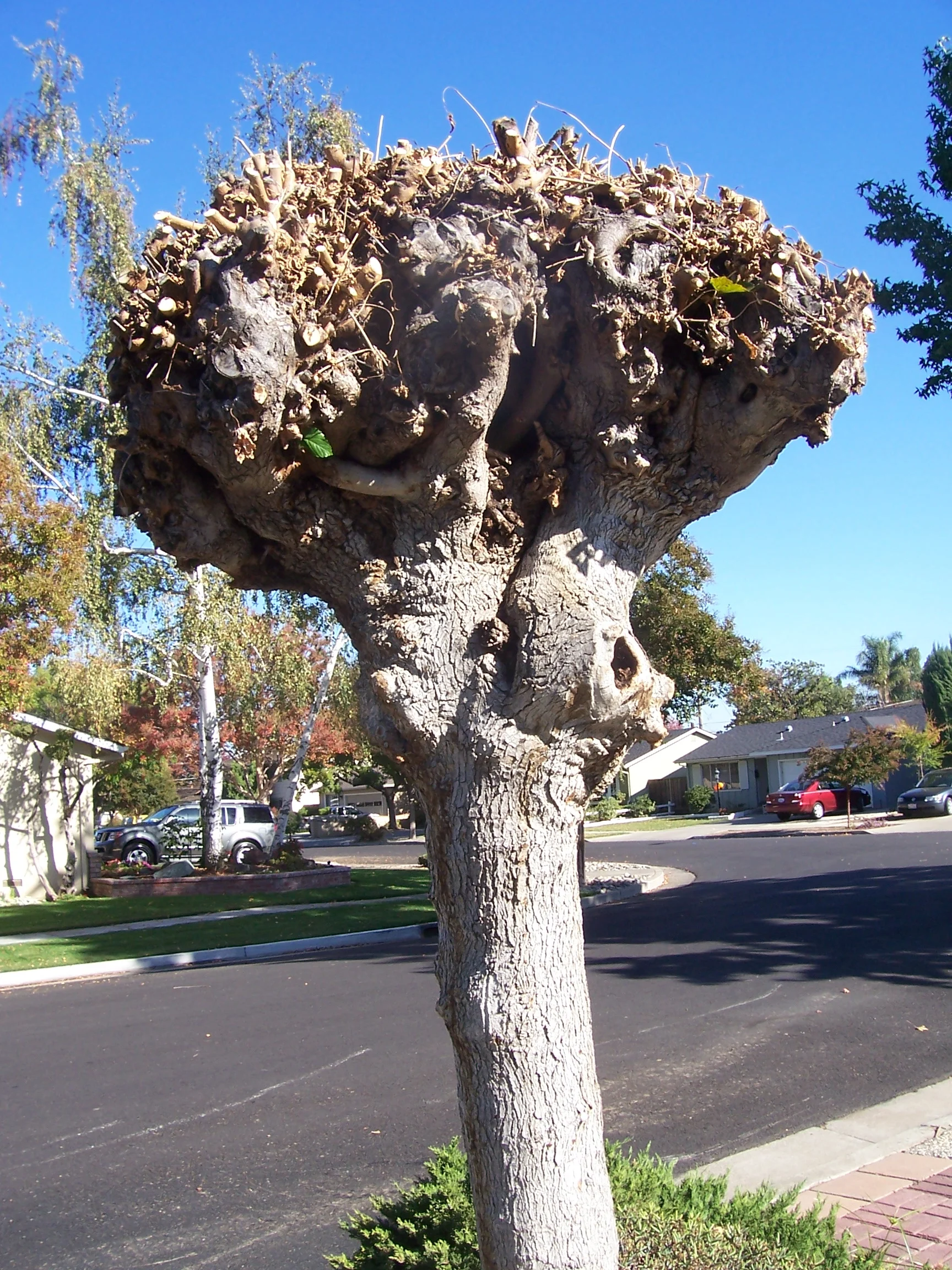1) The City of San Jose holds property owners responsible for street trees
You know that tree on the street between the paved road and the sidewalk? That’s a street tree. Street trees are beautiful, boost property values and make neighborhoods more attractive. I mean, who likes endless concrete?
A mature, row of street trees makes a neighborhood inviting.
According to Section 13.28.190 of the San Jose Municipal Code, the city expects you to care for your tree in the same way that your parents expected you to care for your pets, water them, feed them and clean up after them (walks are optional). It’s a big responsibility. There’s only one downside…
2) You are held accountable for any mischief your tree causes
But how could a tree get into trouble? They don’t bite and can’t walk! What’s the deal? Guys, I hate to break it to you, but your tree can get up to plenty of trouble where you can’t see. The roots can grow outward and disrupt buried utilities, roads and sidewalks. Branches can interfere with power lines or grow in ways that impede traffic and visibility. Trees with structural problems or dead branches may even pose a safety hazard.
Pictured: A damaged tree covered in lights is a fall and fire hazard.
Section 13.28.200 of Municipal Code allows the city to issue you a notice to get your tree trimmed or pruned, or removed (in the case of dead and dying trees) and Section 13.28.190 holds you responsible if somebody else is injured as a result of improper tree care. The city also holds you responsible for sidewalk repair and maintenance. Now some of you might be thinking that trees are just too much hassle at this point and are probably eyeing chainsaws. The City has you covered because…
3) You can’t prune or remove a tree without permission
The city says “Except as provided in this section no person shall trim, prune, cut or remove any street tree except pursuant to a permit from the director of transportation” . In other words, you need to ask permission before you trim or remove your tree. When they get your request form they’ll send out an inspector from The City Arborist Office to see if the tree really needs pruning or removal. If they approve the request you can prune or remove your tree AND they’ll give you information about how to do it safely.
4) What happens if I cut or prune my tree without a permit?
I’m glad you asked. If you prune or cut your tree illegally you can be issued a fine up to $250 for pruning and up to $2,000 for removal. If you top your tree, (cut off most of the foliage and branches), you can be fined as if you had illegally removed your tree. Both the International Society of Arboriculture and the City of San Jose know that topping kills trees.
Pictured: A mulberry tree that has been subject to repeated pruning, (pollarding). Pollarding is a dangerous technique that removes the annual growth of a tree, leaving poor structure and disfiguring scar tissue.
If you damage your tree in such a way as it needs to be removed and attended by the city you are responsible for the bill AND for putting a replacement tree in place. If you cut or damage a heritage tree you can be fined up to $30,000. I don’t know why you’d want to risk unapproved tree removal or cutting though. It’s not just the fines or the law. You shouldn’t do this because…
5) Tree cutting and pruning is dangerous
There’s an entire subgenre of tree cutting/pruning accident videos on Youtube. Some of these people are professionals, many are homeowners. Every year people are injured or die in tree-related accidents. The CDC reports that there are approximately 36,000 chainsaw accidents a year. Tree care workers have to deal with hazards like tool accidents, electrocution from power lines, falling from trees or trees falling on workers. What’s more, if you don’t prune your tree properly you could end up with a dead or unstable tree which poses a risk to your home, your family, and anything nearby. Really, with all the risk involved in pruning or cutting it’s best to go through professional tree care companies. It wouldn’t hurt to ask them if certified arborists will be performing the work too. This might all sound like a headache but…
6) Trees are worth the time, money and effort your spend maintaining them.
Trees aren’t just aesthetically valuable. Trees are infrastructure for ecosystem services and property owners. A mature tree planted on the west side of your home can mean a 12% annual energy cost reduction. Shade trees can reduce cooling energy costs by up to 30%. Healthy trees can add 10%-20% to a property’s value. A healthy urban forest can also sequester millions of tons of CO2 and other air pollutants, reducing atmospheric greenhouse gasses, dust and particulate levels.
Pictured: What you don't want to be breathing
Trees also protect the soil from erosion and help recharge groundwater. They muffle noise and block glare. They only get better at these things as they mature, making them one of the few pieces of infrastructure that doesn’t depreciate with age. We’re not just saying these things because we love trees; it’s backed up with copious research. For your sake, and everyone else’s, we encourage you to properly maintain your tree and follow city regulations. It’s not “my tree” or “my forest”. It’s our city forest.







